Posted on May 9th, 2019 by Mary Lord
 The driving of the last spike of the Transcontinental Railroad on May 10, 1863, capped more than a century of engineering triumph and human tragedy. Teach your students about the historical impact of engineering and technology on society with these activities and resources designed to mark the anniversary of that fateful meeting of two steam locomotives at Promontory, Utah, 150 years ago.
The driving of the last spike of the Transcontinental Railroad on May 10, 1863, capped more than a century of engineering triumph and human tragedy. Teach your students about the historical impact of engineering and technology on society with these activities and resources designed to mark the anniversary of that fateful meeting of two steam locomotives at Promontory, Utah, 150 years ago.
Read More
Filed under: Lesson Plans, Special Features, Web Resources | Comments Off on Transcontinental Railroad Turns 150
Tags: Civil Engineering, Class Activities, Golden spike 150th transcontinental railway, History, Internet Resources, Lesson Plan, Resources for Teachers, tracks, train, tunnels, Web Resources
Posted on May 3rd, 2019 by Mary Lord
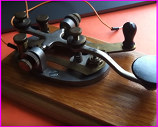 Students in grades 4 to 8 or higher learn the basics of electricity and sound by designing and building a working telegraph system using batteries, wire, and other simple parts. They then use their telegraphs – one of history’s most important inventions – to send and receive messages.
Students in grades 4 to 8 or higher learn the basics of electricity and sound by designing and building a working telegraph system using batteries, wire, and other simple parts. They then use their telegraphs – one of history’s most important inventions – to send and receive messages.
Read More
Filed under: Class Activities, Grades 6-8, Grades 9-12, Lesson Plans | Comments Off on Build a Telegraph Tapper
Tags: Class Activities, electricity, Energy, Golden spike transcontinental railroad, History, Lesson Plan, Morse code, sound, telecommunications, telegraph, train
Posted on August 14th, 2017 by Mary Lord
 On August 21, 2017, all of North America will be treated to a solar eclipse, including a 90-mile swath of totality stretching from Oregon’s coast to Charleston, S.C. NASA has assembled a helpful guide for where, when, and how to experience the eclipse, including tips for safe viewing.
On August 21, 2017, all of North America will be treated to a solar eclipse, including a 90-mile swath of totality stretching from Oregon’s coast to Charleston, S.C. NASA has assembled a helpful guide for where, when, and how to experience the eclipse, including tips for safe viewing.
Read More
Filed under: Class Activities, K-12 Outreach Programs, Special Features, Web Resources | Comments Off on Eclipse 101: What, Where, How?
Tags: Astronomy, eclipse viewing, Geography, History, Internet Resources, maps, NASA, Outreach, Resources for Teachers, solar eclipse, totality, Web Resources
Posted on November 23rd, 2016 by Mary Lord
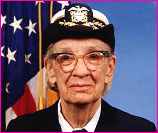 Rear Admiral Grace Murray Hopper was the first woman to earn a Ph.D. in mathematics from Yale, pioneered computer programming languages, discovered the first computer “bug,” and retired as the Navy’s highest ranking, longest-serving female officer in history. They even named a naval destroyer after her.
Rear Admiral Grace Murray Hopper was the first woman to earn a Ph.D. in mathematics from Yale, pioneered computer programming languages, discovered the first computer “bug,” and retired as the Navy’s highest ranking, longest-serving female officer in history. They even named a naval destroyer after her.
Read More
Filed under: Special Features | Comments Off on Amazing Grace
Tags: Computer Engineering, Computer Programming, Computer Science, Engineering in History, History, Mathematics, Science, Women in Engineering, Women in Science
Posted on August 18th, 2016 by Mary Lord
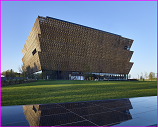 The National Park Service just turned 100 and what better way to celebrate than with the grand opening of a stunning new addition to the National Mall. The $540 million National Museum of African American History and Culture is adorned with a corona, or scrim, of 3,600 bronze-colored cast-aluminum panels that glow at night from the light within, and was built around a 77-ton, 80-foot-long railway car and other huge artifacts housed in its vast below-ground exhibit space.
The National Park Service just turned 100 and what better way to celebrate than with the grand opening of a stunning new addition to the National Mall. The $540 million National Museum of African American History and Culture is adorned with a corona, or scrim, of 3,600 bronze-colored cast-aluminum panels that glow at night from the light within, and was built around a 77-ton, 80-foot-long railway car and other huge artifacts housed in its vast below-ground exhibit space.
Read More
Filed under: K-12 Outreach Programs, Special Features | Comments Off on American Roots
Tags: Civil Engineering, construction, History, National Mall, National Museum of African American History and Culture, National Park Service, Smithsonian
Posted on August 18th, 2016 by Mary Lord
 Students in grades 3 to 5 use engineering problem solving to create structures from paper, straws, tape, and paper clips that can support the weight of at least one textbook. For the second trial, they examine examples of successful buildings in history and try again.
Students in grades 3 to 5 use engineering problem solving to create structures from paper, straws, tape, and paper clips that can support the weight of at least one textbook. For the second trial, they examine examples of successful buildings in history and try again.
Read More
Filed under: Class Activities, Grades K-5 | Comments Off on Shapes of Strength
Tags: building, construction engineering, Design, History, learning from failure, materials, parthenon, pyramids, shapes, skyscraper, STEAM, strength, Structural Engineering, Taipei 101
Posted on July 17th, 2011 by Mary Lord
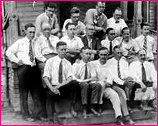 Look what turned up in the “nation’s attic.” The Smithsonian Institution has released 25 photos of scientists from the 1925 “monkey trial,” more formally known as the State of Tennessee v. John Thomas Scopes. The scientists and science reporters were supporters of the defense of Scopers, who was convicted of violating a state law against teaching evolution to school children.
Look what turned up in the “nation’s attic.” The Smithsonian Institution has released 25 photos of scientists from the 1925 “monkey trial,” more formally known as the State of Tennessee v. John Thomas Scopes. The scientists and science reporters were supporters of the defense of Scopers, who was convicted of violating a state law against teaching evolution to school children.
Read More
Filed under: K-12 Education News | Comments Off on Scopes Trial Scientists on Flickr
Tags: History, Museums, Scientists, Scopes Trial, Smithsonian
Posted on February 8th, 2011 by Mary Lord
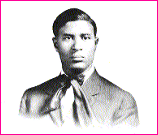 Ever wonder what driving would be like without traffic signals? Garrett Augustus Morgan, Sr., did. Driving through Cleveland, Ohio, where he owned a prosperous sewing machine repair and tailoring business, the Kentucky-born son of slaves was keenly aware of the danger of collisions…
Ever wonder what driving would be like without traffic signals? Garrett Augustus Morgan, Sr., did. Driving through Cleveland, Ohio, where he owned a prosperous sewing machine repair and tailoring business, the Kentucky-born son of slaves was keenly aware of the danger of collisions…
Read More
Filed under: Special Features | Comments Off on Garrett Morgan, Traffic Signal Inventor
Tags: African-American engineers, African-American history, African-American Inventors, Engineering in History, History, Minority Group Engineers
Posted on January 30th, 2011 by Jaimie Schock
 Twenty five years ago, on January 28, Americans watched in horror as the space shuttle Challenger exploded, barely a minute after takeoff, killing all seven crew members. Schools nationwide still honor the memory of Christa McAuliffe, a New Hampshire high school social studies teacher who was aboard the ill-fated flight that morning as NASA’s first Teacher in Space Project participant.
Twenty five years ago, on January 28, Americans watched in horror as the space shuttle Challenger exploded, barely a minute after takeoff, killing all seven crew members. Schools nationwide still honor the memory of Christa McAuliffe, a New Hampshire high school social studies teacher who was aboard the ill-fated flight that morning as NASA’s first Teacher in Space Project participant.
Read More
Filed under: K-12 Education News | Comments Off on Learning from the Challenger Tragedy
Tags: Aeronautics, Aerospace, Events, History, NASA
 The driving of the last spike of the Transcontinental Railroad on May 10, 1863, capped more than a century of engineering triumph and human tragedy. Teach your students about the historical impact of engineering and technology on society with these activities and resources designed to mark the anniversary of that fateful meeting of two steam locomotives at Promontory, Utah, 150 years ago.
The driving of the last spike of the Transcontinental Railroad on May 10, 1863, capped more than a century of engineering triumph and human tragedy. Teach your students about the historical impact of engineering and technology on society with these activities and resources designed to mark the anniversary of that fateful meeting of two steam locomotives at Promontory, Utah, 150 years ago.








 Students in grades 4 to 8 or higher learn the basics of electricity and sound by designing and building a working telegraph system using batteries, wire, and other simple parts. They then use their telegraphs – one of history’s most important inventions – to send and receive messages.
Students in grades 4 to 8 or higher learn the basics of electricity and sound by designing and building a working telegraph system using batteries, wire, and other simple parts. They then use their telegraphs – one of history’s most important inventions – to send and receive messages. On August 21, 2017, all of North America will be treated to a solar eclipse, including a 90-mile swath of totality stretching from Oregon’s coast to Charleston, S.C. NASA has assembled a helpful guide for where, when, and how to experience the eclipse, including tips for safe viewing.
On August 21, 2017, all of North America will be treated to a solar eclipse, including a 90-mile swath of totality stretching from Oregon’s coast to Charleston, S.C. NASA has assembled a helpful guide for where, when, and how to experience the eclipse, including tips for safe viewing. Rear Admiral Grace Murray Hopper was the first woman to earn a Ph.D. in mathematics from Yale, pioneered computer programming languages, discovered the first computer “bug,” and retired as the Navy’s highest ranking, longest-serving female officer in history. They even named a naval destroyer after her.
Rear Admiral Grace Murray Hopper was the first woman to earn a Ph.D. in mathematics from Yale, pioneered computer programming languages, discovered the first computer “bug,” and retired as the Navy’s highest ranking, longest-serving female officer in history. They even named a naval destroyer after her. The National Park Service just turned 100 and what better way to celebrate than with the grand opening of a stunning new addition to the National Mall. The $540 million National Museum of African American History and Culture is adorned with a corona, or scrim, of 3,600 bronze-colored cast-aluminum panels that glow at night from the light within, and was built around a 77-ton, 80-foot-long railway car and other huge artifacts housed in its vast below-ground exhibit space.
The National Park Service just turned 100 and what better way to celebrate than with the grand opening of a stunning new addition to the National Mall. The $540 million National Museum of African American History and Culture is adorned with a corona, or scrim, of 3,600 bronze-colored cast-aluminum panels that glow at night from the light within, and was built around a 77-ton, 80-foot-long railway car and other huge artifacts housed in its vast below-ground exhibit space.  Students in grades 3 to 5 use engineering problem solving to create structures from paper, straws, tape, and paper clips that can support the weight of at least one textbook. For the second trial, they examine examples of successful buildings in history and try again.
Students in grades 3 to 5 use engineering problem solving to create structures from paper, straws, tape, and paper clips that can support the weight of at least one textbook. For the second trial, they examine examples of successful buildings in history and try again.  Look what turned up in the “nation’s attic.” The Smithsonian Institution has released 25 photos of scientists from the 1925 “monkey trial,” more formally known as the State of Tennessee v. John Thomas Scopes. The scientists and science reporters were supporters of the defense of Scopers, who was convicted of violating a state law against teaching evolution to school children.
Look what turned up in the “nation’s attic.” The Smithsonian Institution has released 25 photos of scientists from the 1925 “monkey trial,” more formally known as the State of Tennessee v. John Thomas Scopes. The scientists and science reporters were supporters of the defense of Scopers, who was convicted of violating a state law against teaching evolution to school children. Ever wonder what driving would be like without traffic signals? Garrett Augustus Morgan, Sr., did. Driving through Cleveland, Ohio, where he owned a prosperous sewing machine repair and tailoring business, the Kentucky-born son of slaves was keenly aware of the danger of collisions…
Ever wonder what driving would be like without traffic signals? Garrett Augustus Morgan, Sr., did. Driving through Cleveland, Ohio, where he owned a prosperous sewing machine repair and tailoring business, the Kentucky-born son of slaves was keenly aware of the danger of collisions… Twenty five years ago, on January 28, Americans watched in horror as the space shuttle Challenger exploded, barely a minute after takeoff, killing all seven crew members. Schools nationwide still honor the memory of Christa McAuliffe, a New Hampshire high school social studies teacher who was aboard the ill-fated flight that morning as NASA’s first Teacher in Space Project participant.
Twenty five years ago, on January 28, Americans watched in horror as the space shuttle Challenger exploded, barely a minute after takeoff, killing all seven crew members. Schools nationwide still honor the memory of Christa McAuliffe, a New Hampshire high school social studies teacher who was aboard the ill-fated flight that morning as NASA’s first Teacher in Space Project participant.